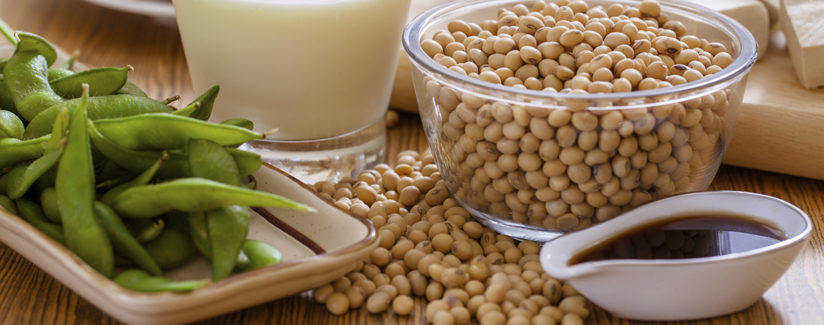
Soyfoods Made Simple
08/22/2016
Originally posted on April 8, 2016.
Confused about soyfoods? We’re here to help you decide how to incorporate various types of soyfoods into your diet.
Why add soy to your diet?
Soy is a complete protein, and soyfoods are rich in vitamins and minerals including folate, potassium and even fiber in some cases. In the past 15 years, soyfoods have attracted the attention of research scientists around the world for health properties beyond basic nutrition as well. Soy is a versatile bean — it’s found in foods like milk and sauce, and can be added to foods like breads, cereals and meat products, and is also used as a meat substitute in vegetarian products such as soy burgers and soy hot dogs.
Four soyfoods items you can incorporate into your diet include the following:
Miso – This rich, salty condiment characterizes the essence of Japanese cooking. It’s a smooth paste made from soybeans, a barley or grain malt, salt and a mold culture. It is then aged in cedar vats for one to three years. Miso adds great flavor to soups, sauces, dressings, marinades and pates.
Edamame – These large soybeans are harvested when the beans are still green and sweet tasting. They can be served as a snack or main vegetable dish after boiling in slightly salted water for 15-20 minutes. They are a good source of both protein and fiber.
Tofu – Tofu is sometimes referred to as soybean curd and is a soft, cheese-like food made by curdling fresh, hot soymilk with a coagulant. Tofu is a bland product that easily absorbs the flavors of other ingredients with which it is cooked. Tofu is rich in both high-quality protein and B vitamins and is low in sodium. Types of tofu include firm – higher in protein, fat and calcium than other forms of tofu; soft – good for recipes that call for blended tofu; and silken – a creamy product that can be used as a replacement for sour cream in many dip recipes.
Tempeh – A traditional Indonesian food, tempeh is a chunky, tender soybean cake. Whole soybeans, sometimes mixed with another grain such as rice or millet, are fermented into a rich cake of soybeans with a smoky or nutty flavor. It’s a great source of protein and because it is fermented is an excellent source of gut-friendly probiotic bacteria. Tempeh can be marinated and grilled and added to soups, casseroles or chili.


























